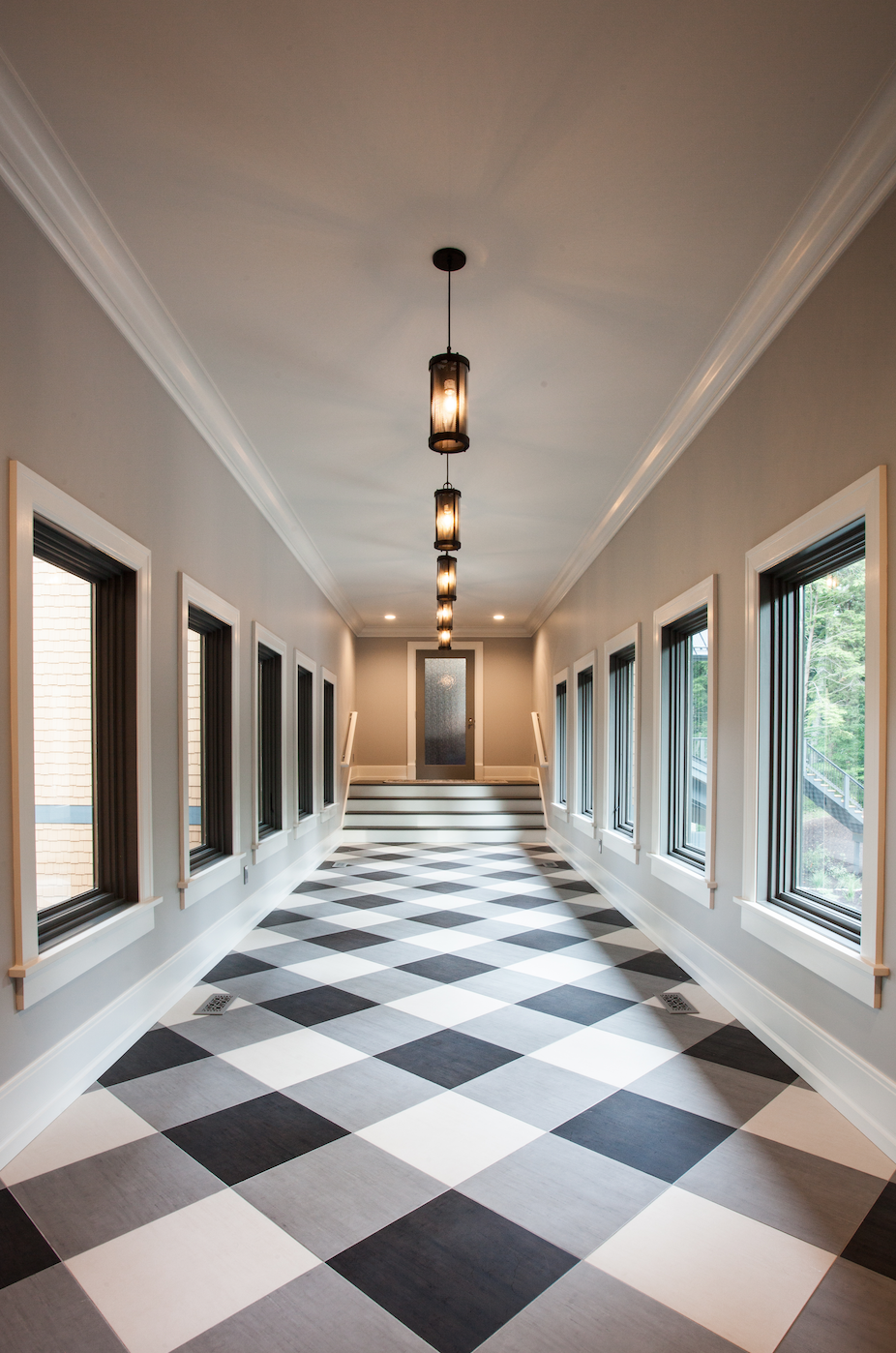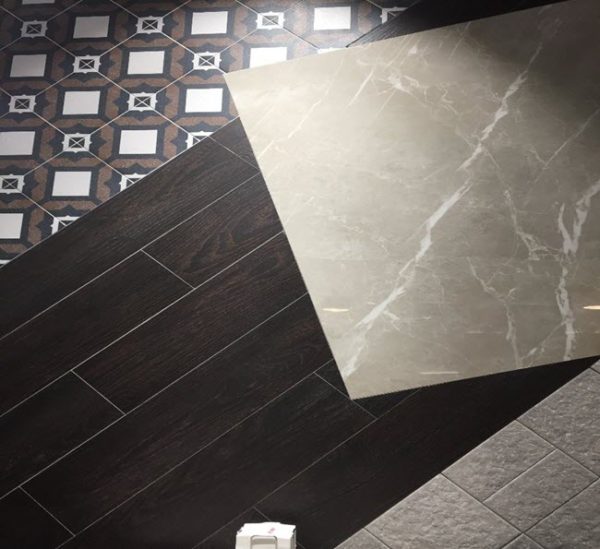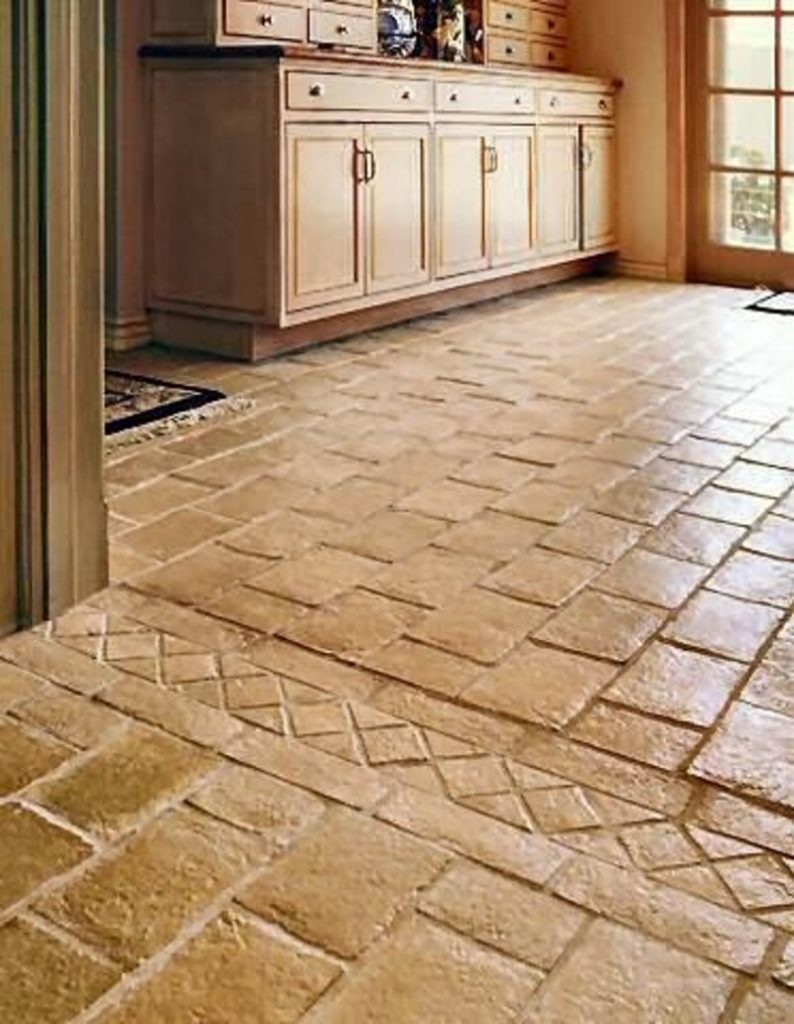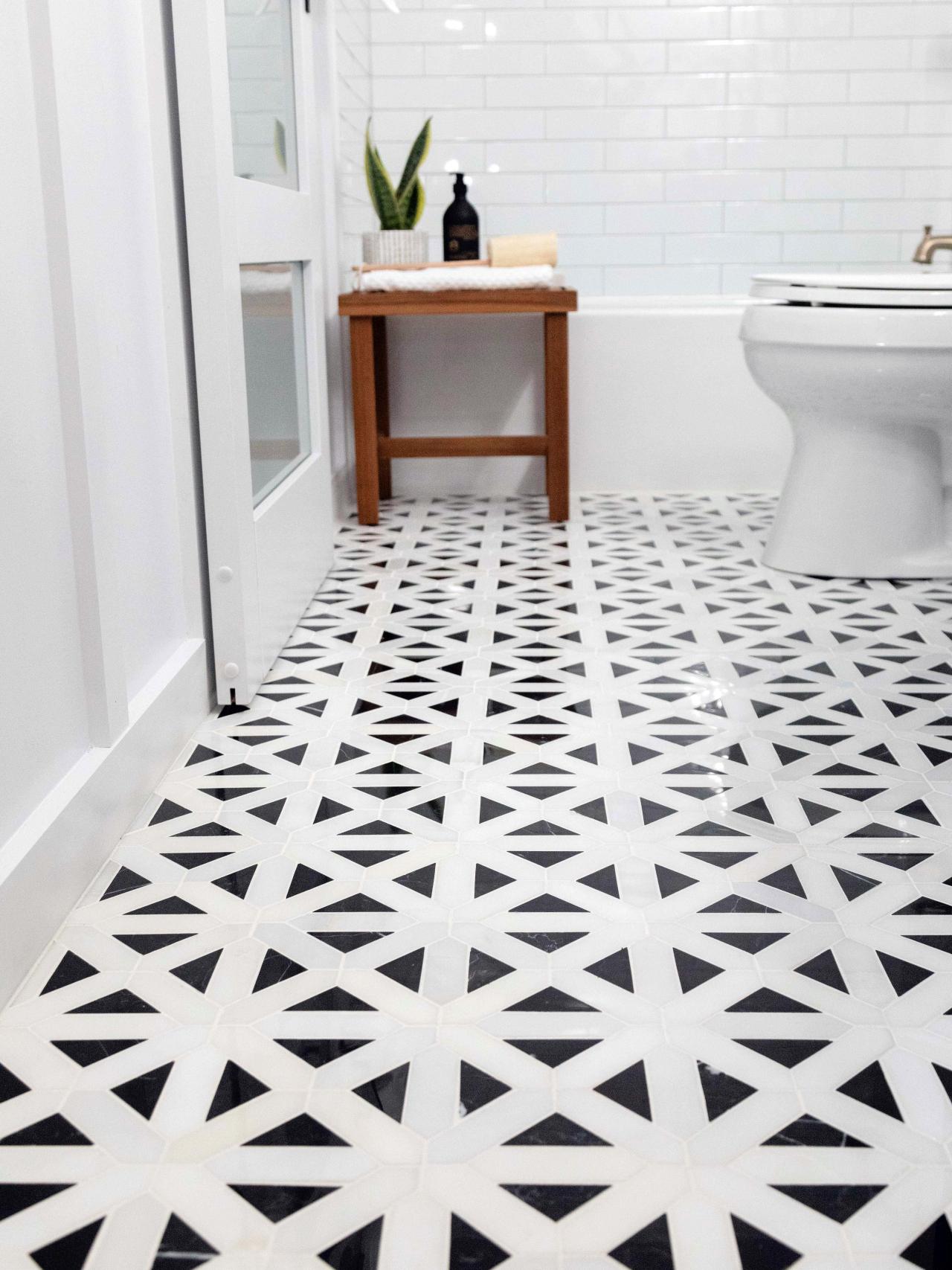As an interior design enthusiast, I have always been captivated by the transformative power of tiles in shaping the ambiance of a space. From elegant and traditional to modern and sleek, the right tile floor pattern can breathe life into any room, turning it into a true masterpiece. In this article, I will delve into two of the most beloved tile floor patterns – the classic herringbone and the versatile basketweave. Join me on this delightful journey as we explore their historical origins, visual appeal, functionality, and how to integrate them into your interior design.
Classic Herringbone Pattern
The herringbone pattern, with its timeless charm, has graced the floors of esteemed buildings throughout history. Its name originates from the resemblance of the pattern to the bones of a herring fish. The interlocking design creates a visually captivating zigzag effect that adds depth and character to any room. The herringbone pattern is particularly popular in elegant, traditional settings, though it can also find a place in more contemporary interiors.
When choosing herringbone tiles, you can opt for various materials like natural stone, ceramic, or porcelain, each offering a unique texture and color palette. The versatility of the herringbone pattern allows it to shine in various spaces, from living rooms and hallways to kitchen backsplashes and bathroom floors.
Installing herringbone tiles requires precision and attention to detail. The pattern can be laid in a range of directions, each producing a distinct look. For a classic feel, align the tiles at a 45-degree angle, or for a more modern twist, experiment with different angles. Despite its beauty, the herringbone pattern can be more challenging to install than traditional patterns, and it is essential to hire a skilled professional for a flawless finish.
The herringbone pattern’s allure is not without its considerations. While it elevates the aesthetics of any space, it might not be the ideal choice for areas prone to heavy foot traffic due to the complexity of its installation. Additionally, its intricate design can make maintenance slightly more involved compared to simpler tile patterns.

Versatile Basketweave Pattern
As we venture into the world of tile floor patterns, the basketweave design unveils itself as a true chameleon. Evoking a sense of warmth and timelessness, the basketweave pattern derives its name from the traditional method of weaving baskets. This pattern typically features square tiles grouped together in pairs to form small, interlocking squares, often bordered by larger tiles.
Historically, the basketweave pattern found its origins in ancient civilizations, and it continues to captivate interior designers and homeowners alike. Its ability to adapt to various interior styles is unparalleled. Whether you wish to create a classic, retro, or even a modern setting, the basketweave pattern can seamlessly integrate with your design vision.
Basketweave tiles are available in a plethora of materials, including marble, porcelain, and glass, among others. The choice of material can dramatically influence the overall look of the pattern, allowing you to tailor it to your desired ambiance.
The basketweave pattern is an excellent option for high-traffic areas due to its sturdy construction. The interlocking squares distribute weight more evenly, enhancing its durability and resistance to wear. As with any tile floor pattern, professional installation is crucial to achieving a flawless finish and ensuring the tiles remain structurally sound over time.
One potential drawback of the basketweave pattern is that it might not be suitable for large open spaces. In such cases, it may appear overwhelming, as its intricate design shines best in more contained areas or as decorative accents.
Aesthetics and Design Considerations
As we journey through the enchanting realm of tile floor patterns, it’s essential to consider the aesthetics and design elements that can truly elevate these patterns’ beauty. One of the key aspects to keep in mind is the color and material choices for your tiles. Each pattern can take on a different personality depending on the colors and materials you choose. For herringbone, you may opt for classic neutrals or daring contrasting tones to make a bold statement. On the other hand, the basketweave pattern allows for a delightful play of colors and textures to create a rich visual tapestry.
Moreover, the arrangement and layout of the tiles can significantly impact the room’s visual flow and spatial perception. To draw attention to specific areas, consider creating focal points with intricate tile arrangements. For instance, a herringbone pattern leading to a central fireplace or a basketweave pattern framing a luxurious bathtub can add a touch of grandeur to the space.
Coordinating tile floor patterns with other design elements is vital for a harmonious overall look. Pairing the tiles with complementary wall colors, furnishings, and decor accents can create a cohesive and inviting atmosphere. Additionally, it is essential to strike a balance between the visual impact of the tiles and other elements in the room, ensuring the space does not feel overwhelming or cluttered.
Functionality and Maintenance
Beyond their visual appeal, tile floor patterns offer practical benefits that make them a popular choice for homeowners and designers alike. Safety is paramount, especially in areas prone to spills or dampness. Both herringbone and basketweave patterns boast excellent slip-resistance, making them ideal for kitchens, bathrooms, and entryways.
Maintenance plays a crucial role in the longevity of your tile floor patterns. Both herringbone and basketweave patterns feature grout lines, which can accumulate dirt and grime over time. Regular cleaning and sealing of the grout will help keep the tiles looking fresh and vibrant for years to come. Additionally, both patterns require periodic resealing to protect their surfaces and maintain their beauty.
Durability is another essential factor when considering tile floor patterns. The herringbone pattern, though intricate, can withstand regular foot traffic if installed correctly. Basketweave patterns, with their interlocking squares, offer added sturdiness, making them suitable for high-traffic areas like hallways or commercial spaces.
Popular Combinations and Customizations
Creativity knows no bounds when it comes to tile floor patterns, and combining different designs can produce captivating and dynamic visuals. Integrating accents and borders into your herringbone or basketweave patterns can add a touch of flair and individuality. These embellishments can be made using contrasting tile colors, materials, or sizes, creating a striking statement within the overall pattern.
For a bold and modern look, you can experiment with mixing herringbone and basketweave patterns in the same space. For instance, you may have a herringbone pattern as the central floor design in a living room, while using a basketweave pattern for the entryway or adjacent bathroom. This juxtaposition of patterns adds visual interest and brings a sense of dynamism to the room.
To further enhance the visual impact, consider playing with color gradients within the pattern or incorporating tiles of varying sizes. This customization can create an illusion of movement or depth, making the floor a captivating focal point.
Case Studies: Real-Life Examples
Seeing these patterns in action can be inspiring and provide practical insights into how to incorporate them into your own spaces. Let’s explore a few real-life case studies that highlight the transformative power of herringbone and basketweave patterns.
Residential Applications of Herringbone and Basketweave Tiles:
In a charming townhouse, the herringbone pattern steals the spotlight in the living room, where a fireplace sits at its center. The warm, honey-colored herringbone tiles radiate elegance and charm, perfectly complementing the classic decor. In the bathroom, a basketweave pattern creates a cozy and inviting atmosphere, harmonizing with the vintage-inspired fixtures and fittings.
Commercial and Public Space Designs:
A boutique hotel’s lobby welcomes guests with a striking herringbone floor in marble and black granite, creating a luxurious and captivating entry point. The restaurant’s floor showcases a basketweave pattern in tones of earthy greens and browns, setting the stage for a relaxed and natural dining experience.
Before-and-after comparisons also illustrate the dramatic changes that tile floor patterns can bring to a space. A mundane office space transforms into an elegant and professional environment with the introduction of herringbone tiles, infusing the room with sophistication and charm.
Sustainability and Eco-Friendly Considerations
In an era where environmental consciousness is paramount, exploring the sustainability aspects of tile floor patterns is essential. Some materials used in tiles, such as natural stone and ceramic, are more eco-friendly than others, like non-renewable resources. Prioritizing tiles made from recycled materials or those produced with environmentally friendly manufacturing processes can significantly reduce the environmental impact of your design choices.
Furthermore, certifications like LEED (Leadership in Energy and Environmental Design) or GREENGUARD can help you identify eco-friendly tile options that meet specific sustainability criteria. Opting for such tiles not only supports the environment but also ensures a healthier living environment for occupants.
Budgeting and Cost Considerations
While tile floor patterns can be a captivating addition to any space, it’s essential to consider your budget and the associated costs. The price of tiles can vary depending on the material, brand, and design intricacy. For instance, natural stone herringbone tiles may be more expensive compared to ceramic or porcelain options.
Besides the cost of the tiles themselves, the installation plays a significant role in your budget. Both herringbone and basketweave patterns require skilled labor for proper installation. The complexity of the patterns can affect installation time and costs, so it’s crucial to obtain quotes from reputable installers and factor this into your budget planning.
Final Thoughts
The world of tile floor patterns is a vast and exciting realm, offering endless possibilities for creating captivating and functional spaces. The classic herringbone and versatile basketweave patterns, each with its own unique charm and appeal, can transform any room into a work of art.
When choosing between these patterns, consider the specific aesthetic and functional requirements of your space. Whether you opt for the timeless elegance of herringbone or the dynamic versatility of basketweave, the result will be a floor that brings joy and admiration for years to come.
As you embark on your tile floor pattern journey, let your imagination soar, and don’t be afraid to get creative with combinations and customizations. With careful consideration and skilled craftsmanship, you can create an interior space that truly reflects your unique personality and style.
So, take the first step in turning your vision into reality and embark on this enchanting design adventure with tile floor patterns. Happy decorating
Top 7 Tile Patterns You Need To Know Popular Tile Layouts
Floor Design 2 u2013 Rigo Tile
84 Tile Layout Patterns ideas tile layout, tile layout patterns
How to Lay a Tile Floor HGTV
Related Posts:
- Coral Tile Flooring
- Tile Floor Room Transitions
- Old World Tile Flooring
- Slip Resistant Porcelain Tile Flooring
- Best Way To Mop Ceramic Tile Floors
- How To Clean Terrazzo Tile Floors
- Driftwood Ceramic Tile Flooring
- How To Seal Quarry Tile Floors
- How To Clean Tile Floors In Bathroom
- Ideas Covering Tile Floors







